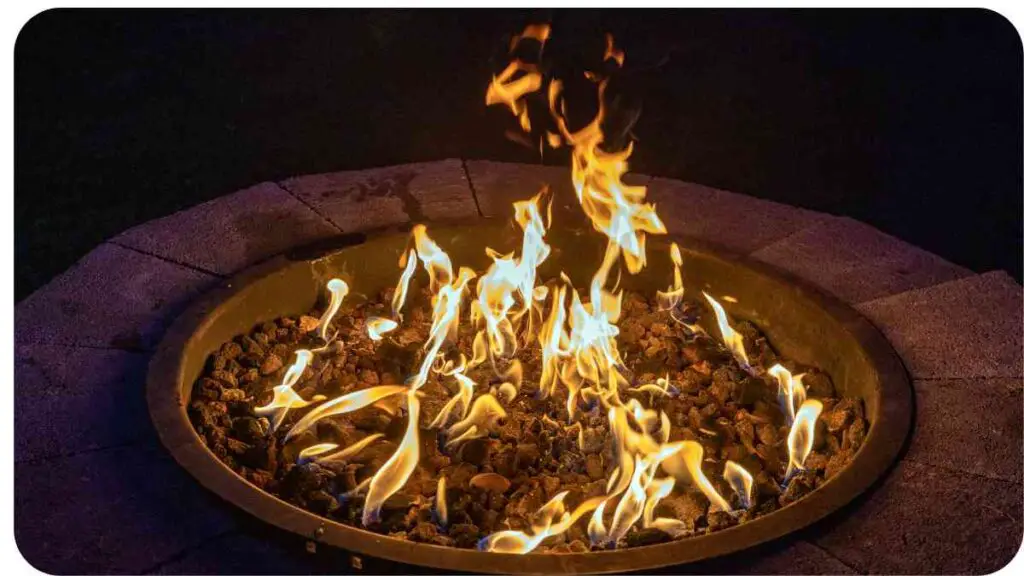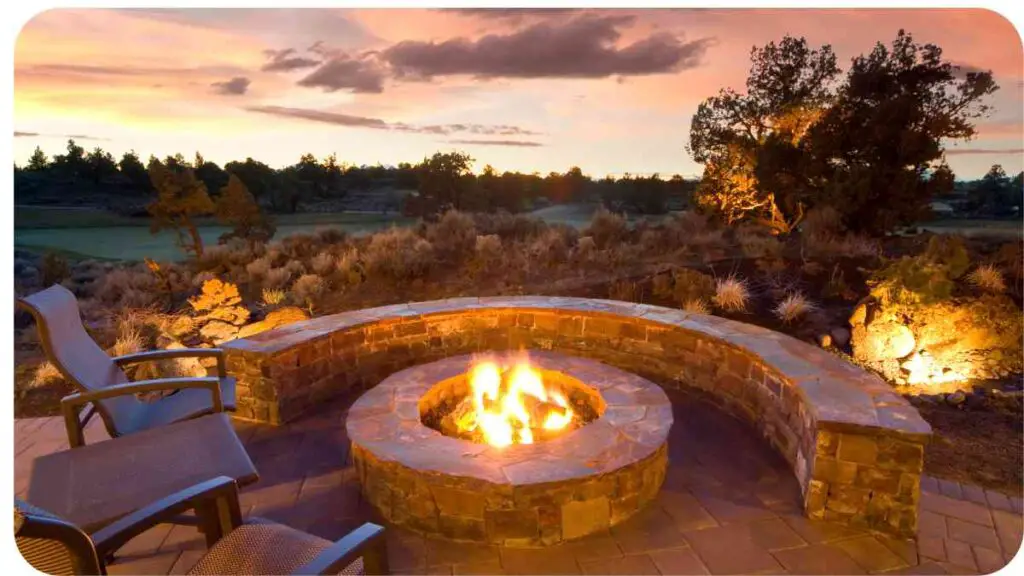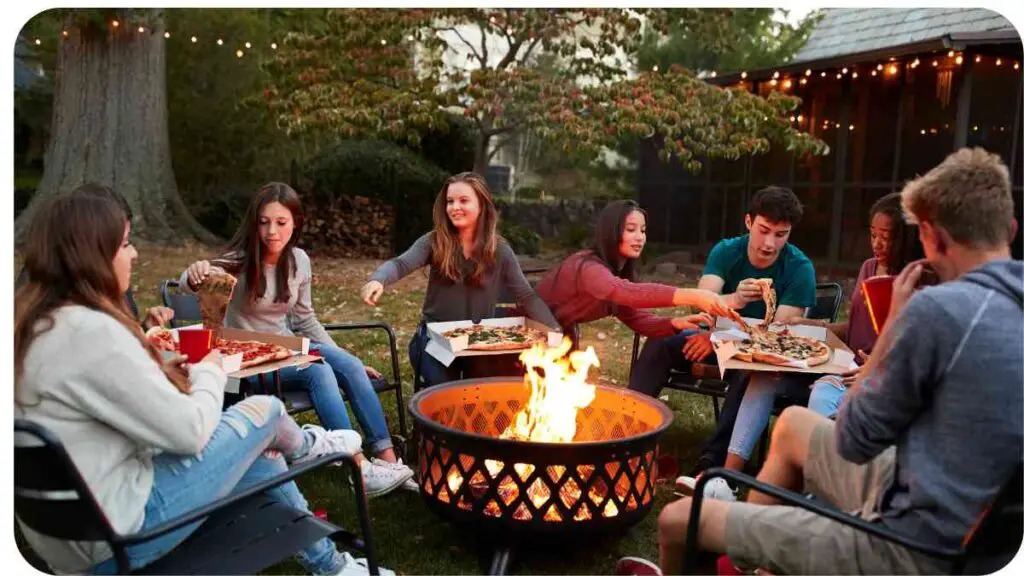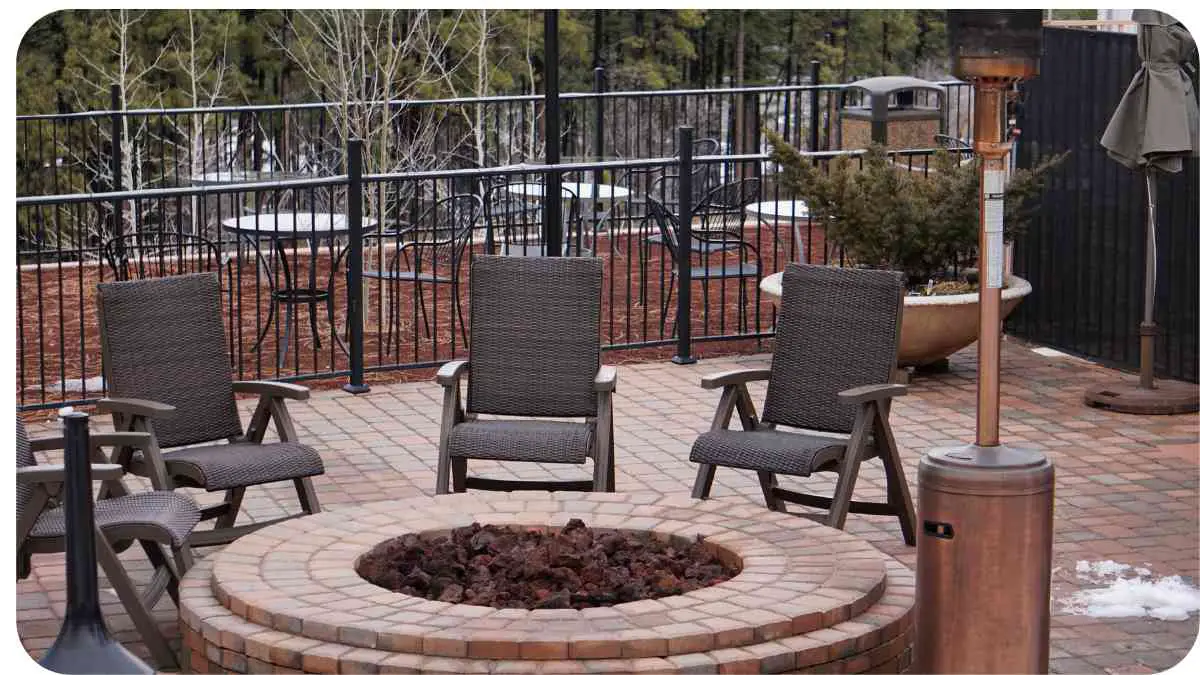A fire pit can be the centerpiece of a perfect evening, providing warmth and ambiance for gatherings with friends and family. But what happens when your fire pit refuses to light up? It can be frustrating and, more importantly, a potential safety concern.
If your outdoor fire pit isn’t working as it should, don’t worry! We’re here to guide you through the possible reasons and solutions. From checking your fuel supply to understanding ignition system issues, we’ve got you covered.
Let’s dive into the common reasons why your fire pit might not be lighting up and how you can safely troubleshoot and resolve these issues.
| Key Points |
|---|
| Ensure the fuel tank is full and properly connected before troubleshooting a fire pit that won’t light. |
| Regularly clean and inspect the burners to prevent clogging and ensure proper gas flow. |
| Check the ignition system and replace faulty components like switches or batteries as needed. |
| Be mindful of weather conditions, as wind and rain can affect the lighting and performance of your fire pit. |
| Inspect the thermocouple to ensure it is functioning correctly; replace if defective. |
| Always turn off the gas and check for leaks before performing any maintenance or troubleshooting. |
| Store your fire pit properly during off-seasons to avoid rust and damage. |
| Schedule regular maintenance and seasonal checks to keep your fire pit in optimal condition. |
| If troubleshooting doesn’t resolve the issue, seek help from a licensed professional for safety and proper repair. |
Common Reasons Your Fire Pit Won’t Light

Lack of Fuel
One of the most common issues is simply that there isn’t enough fuel. This might sound basic, but it’s worth checking. Sometimes the tank or gas line might be empty or not properly connected.
| Reason | Possible Causes | Solution |
|---|---|---|
| Lack of Fuel | Empty tank or disconnected line | Refill or reconnect the fuel source |
Clogged Burners
Another frequent problem is clogged burners. Debris or dirt can block the burners, preventing the gas from flowing properly and causing ignition issues.
For the garden, dealing with algae can be frustrating. If you notice continuous growth, it might be time to explore why your garden water feature keeps algae blooming. Proper maintenance and environmental factors are key in preventing these persistent issues in outdoor spaces.
| Reason | Possible Causes | Solution |
|---|---|---|
| Clogged Burners | Dirt, rust, or debris | Clean or replace the burners |
Ignition System Issues
If the ignition system is malfunctioning, you may have trouble lighting the fire pit. This could be due to a faulty ignition switch or a dead battery in the electronic igniter.
| Reason | Possible Causes | Solution |
|---|---|---|
| Ignition System Issues | Faulty switch or dead battery | Replace or repair the ignition system |
Weather Conditions
Weather can play a role in the performance of your fire pit. Wind, rain, or extreme temperatures can affect how well it ignites and burns.
| Reason | Possible Causes | Solution |
|---|---|---|
| Weather Conditions | High wind, rain, or extreme temperatures | Wait for favorable conditions |
Faulty Thermocouples
A thermocouple is a safety device that detects whether the pilot light is on. If it fails, it may prevent the fire pit from lighting.
When outdoor equipment malfunctions, it can disrupt the beauty of your garden. If you’re experiencing issues with water circulation, understanding why your garden pond pump isn’t working is essential. Common causes could include blockages or electrical problems requiring prompt attention.
| Reason | Possible Causes | Solution |
|---|---|---|
| Faulty Thermocouples | Defective or worn | Replace the thermocouple |
Safety Precautions Before Troubleshooting
Turn Off the Gas
Before you start troubleshooting, always ensure the gas supply is turned off. This will prevent any accidental leaks or hazards.
| Safety Measure | Why It’s Important |
|---|---|
| Turn Off the Gas | Prevents gas leaks and potential fires |
Check for Leaks
Inspect the connections and lines for any signs of gas leaks. Use a soapy water solution to check for bubbles around the connections.
| Safety Measure | Why It’s Important |
|---|---|
| Check for Leaks | Ensures there are no dangerous gas leaks |
Avoid Flammable Materials
Clear any flammable materials away from the fire pit area. This includes paper, leaves, or other combustibles that could ignite accidentally.
| Safety Measure | Why It’s Important |
|---|---|
| Avoid Flammable Materials | Reduces the risk of accidental fires |
Step-by-Step Troubleshooting Guide

Checking the Fuel Supply
First, ensure that your fuel tank is full and properly connected. If you have a propane tank, it might be worth checking the regulator as well.
Outdoor lighting creates a relaxing ambiance, but if your outdoor lights flicker, it might signal wiring or electrical issues. Ensuring the lights are properly installed and maintained helps prevent malfunctions and ensures a consistent, welcoming glow throughout your outdoor living area.
| Troubleshooting Step | What to Check | What to Do |
|---|---|---|
| Checking the Fuel Supply | Fuel tank level and connections | Refill or reconnect the tank |
Inspecting the Burners
Next, look at the burners for any blockages. Clean them if necessary and ensure they are properly aligned.
| Troubleshooting Step | What to Check | What to Do |
|---|---|---|
| Inspecting the Burners | Dirt or debris on burners | Clean and realign burners |
Testing the Ignition System
Test the ignition system by trying to light the fire pit. If it’s an electronic igniter, check the battery or wiring.
| Troubleshooting Step | What to Check | What to Do |
|---|---|---|
| Testing the Ignition System | Ignition switch and battery | Replace or repair as needed |
Evaluating the Weather Impact
If weather conditions are unfavorable, it might affect ignition. Try lighting the fire pit in calmer conditions.
| Troubleshooting Step | What to Check | What to Do |
|---|---|---|
| Evaluating the Weather Impact | Wind or rain affecting ignition | Wait for better weather |
Examining the Thermocouple
Finally, check the thermocouple for any signs of malfunction. If it’s defective, replace it with a new one.
| Troubleshooting Step | What to Check | What to Do |
|---|---|---|
| Examining the Thermocouple | Condition and operation | Replace if faulty |
When to Call a Professional
Signs That You Need Expert Help
If you’ve tried all these troubleshooting steps and your fire pit still won’t light, it’s time to call in a professional. Look for signs like persistent gas leaks or unresponsive ignition systems.
Keeping outdoor systems functioning smoothly can be challenging. If your automatic sprinkler is not activating, it’s essential to troubleshoot common culprits like clogged heads or broken timers. A malfunctioning sprinkler system can significantly affect the health and appearance of your garden.
| When to Call a Professional | Signs to Watch For | Action |
|---|---|---|
| Persistent Issues | Gas leaks, unresponsive igniter | Contact a qualified technician |
Choosing a Reliable Technician
Choose a technician who is licensed and has good reviews. Ask for recommendations or check online reviews to ensure you get someone reliable.
| Choosing a Technician | What to Consider | How to Proceed |
|---|---|---|
| Reliable Technician | Licenses, reviews, and experience | Check reviews and ask for recommendations |
Preventive Measures for Future Issues

Regular Maintenance
Regularly inspect and clean your fire pit to prevent common issues. This can include checking for rust, cleaning burners, and ensuring the gas lines are secure.
| Preventive Measure | Why It’s Important | How to Implement |
|---|---|---|
| Regular Maintenance | Prevents buildup of issues | Schedule periodic inspections |
Seasonal Checks
Before and after each season, check your fire pit for any damage or wear. This will ensure it’s ready for use and prolong its life.
| Preventive Measure | Why It’s Important | How to Implement |
|---|---|---|
| Seasonal Checks | Ensures readiness and durability | Perform checks before and after seasons |
Proper Storage
Store your fire pit properly during off-seasons to protect it from the elements. This helps in maintaining its
Proper Storage
Store your fire pit properly during off-seasons to protect it from the elements. This helps in maintaining its longevity and prevents rust or damage. Cover your fire pit with a durable, weather-resistant cover when it’s not in use, and store it in a dry place if possible.
A failing retaining wall can lead to bigger issues in your yard. Learning how to address retaining wall failures is crucial in maintaining stability and preventing further damage. Whether it’s due to drainage issues or structural weaknesses, timely intervention is necessary to avoid costly repairs.
| Preventive Measure | Why It’s Important | How to Implement |
|---|---|---|
| Proper Storage | Prevents rust and damage | Use a cover and store in a dry place |
Conclusion
Having a fire pit that won’t light can be a real mood killer, but with the right troubleshooting steps and safety precautions, you can often resolve the issue yourself. Start by checking the basics like fuel levels and burner blockages, and don’t hesitate to call a professional if needed. Regular maintenance and proper storage can also prevent future problems. Remember, a well-maintained fire pit not only ensures safety but also enhances your outdoor experience.
FAQs
Why isn’t my fire pit lighting up even though the fuel tank is full?
If your fire pit isn’t lighting despite having a full tank, it could be due to a clogged burner, a faulty ignition system, or an issue with the thermocouple. Ensure the burners are clean and the ignition system is functioning correctly.
How can I tell if there’s a gas leak?
To check for gas leaks, apply a soapy water solution to the connections and lines. If bubbles form, there’s a leak. Make sure to turn off the gas and address any leaks immediately.
What should I do if the fire pit lights but then goes out?
If the fire pit lights but then goes out, it might be due to an unstable flame, which can be caused by wind or a malfunctioning thermocouple. Try lighting the fire pit in calm weather and check the thermocouple.
How often should I clean my fire pit?
Regular cleaning is recommended to prevent buildup that can affect performance. Clean your fire pit at least once a season or more frequently if you use it often. Check the burners, remove any debris, and ensure the gas lines are clear.
When should I consider calling a professional?
If you’ve tried troubleshooting and the fire pit still doesn’t work, or if you notice gas leaks, malfunctioning components, or persistent issues, it’s best to call a licensed technician to avoid safety risks and ensure proper repair.
Further Reading
- Gas Fire Pit Won’t Light?: This article provides a detailed guide on troubleshooting common issues with gas fire pits that won’t light, including tips on checking the gas supply and ignition system.
- No Gas in Fire Pit?: Learn what to do if your fire pit isn’t getting gas even though the tank is full. This resource explains potential problems and solutions for gas flow issues.
- How to Light an Outdoor Gas Fire Table: This guide covers the steps for safely lighting an outdoor gas fire table, including tips on ignition and maintenance.
FAQs
Why isn’t my fire pit lighting up even though the fuel tank is full?
If your fire pit isn’t lighting despite having a full tank, it could be due to issues like clogged burners, a faulty ignition system, or a malfunctioning thermocouple. Double-check these components to identify the problem.
How can I tell if there’s a gas leak?
To detect gas leaks, use a soapy water solution around the connections and gas lines. If bubbles appear, there’s a leak. Ensure the gas is turned off and address any leaks immediately to avoid hazards.
What should I do if the fire pit lights but then goes out?
If your fire pit lights but goes out quickly, this could be due to wind, an unstable flame, or a faulty thermocouple. Try lighting it in calm weather and check the thermocouple to ensure it’s working properly.
How often should I clean my fire pit?
It’s a good practice to clean your fire pit at least once a season, or more frequently if it’s used often. Regular cleaning helps prevent debris buildup and ensures optimal performance.
When should I consider calling a professional?
Consider calling a professional if you’ve attempted troubleshooting without success, notice persistent gas leaks, or experience ongoing issues with ignition and burners. A licensed technician can provide a thorough inspection and repair.

Hi! My name is Hellen James, and I’m a landscape designer in Los Angeles. I’ve been working with homeowners and businesses to help them improve the look of their properties for over 10 years.

